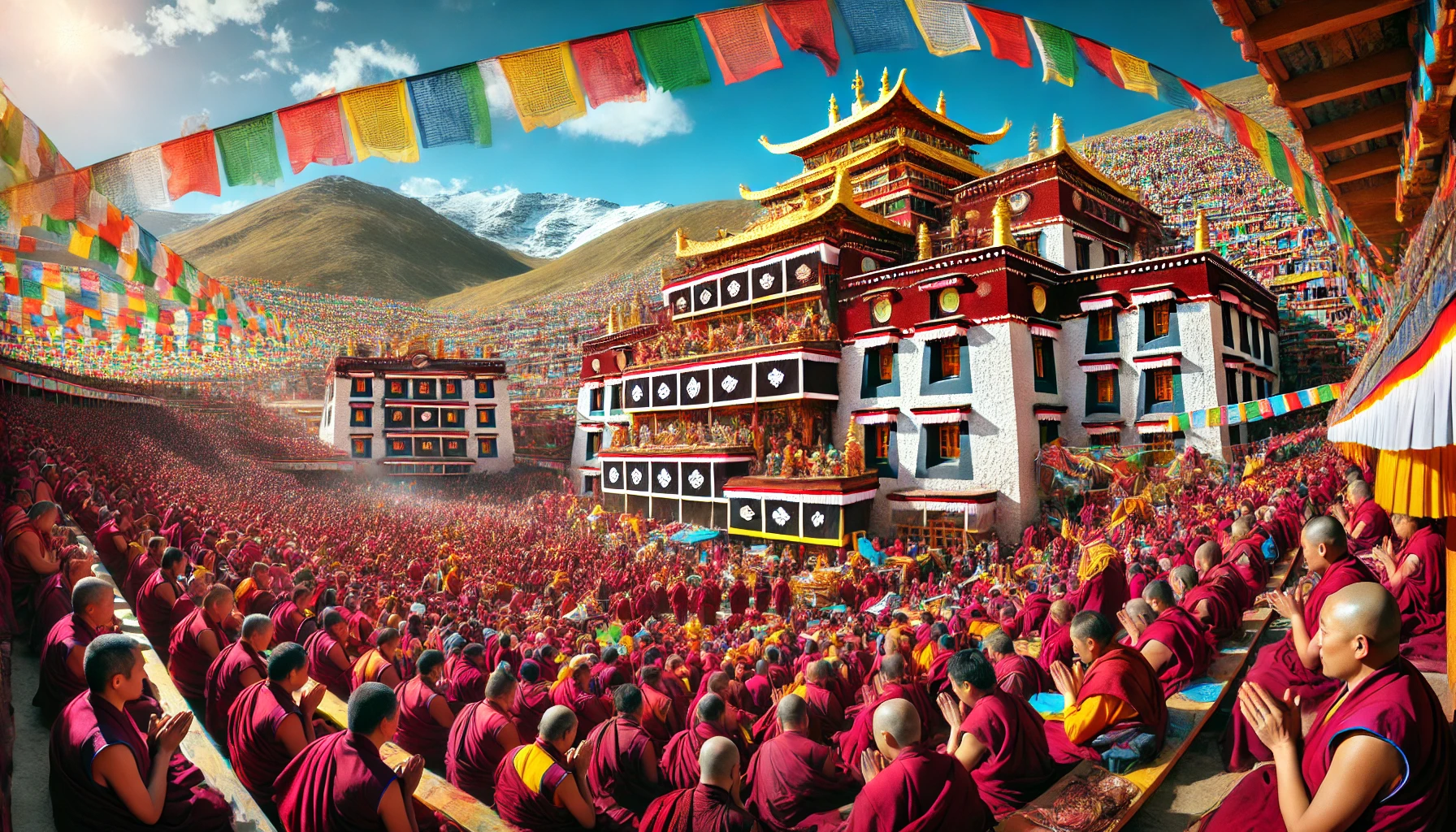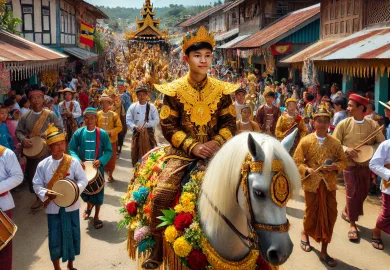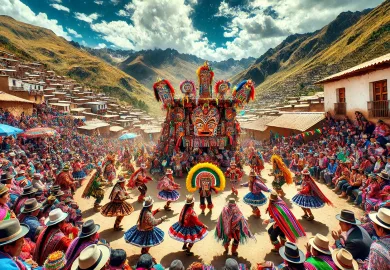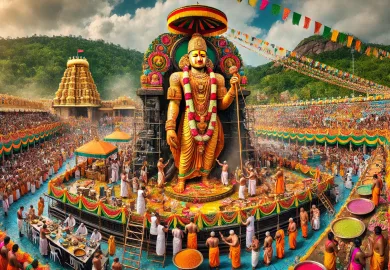
Nestled in the heart of East Tibet, the Great Monlam Festival at Labuleng Monastery is a mesmerizing spiritual event that draws thousands of devotees and curious travelers alike. This grand festival, also known as the “Great Prayer Festival,” is a vivid showcase of Tibetan culture, spirituality, and community spirit. With its deep-rooted history, elaborate rituals, and breathtaking scenic backdrop, the Monlam Festival is a must-experience event for anyone looking to immerse themselves in Tibetan Buddhist traditions.
The Labuleng Monastery, one of the six great monasteries of the Gelugpa school of Tibetan Buddhism, serves as the magnificent setting for this festival. Located in the serene Gannan Tibetan Autonomous Prefecture, this monastery is a spiritual hub that has stood the test of time, continuing to be a beacon of faith and culture in the region. Each year, the Great Monlam Festival transforms this already sacred site into a vibrant center of prayer, devotion, and celebration.
The Rich History of the Great Monlam Festival
The Great Monlam Festival, traditionally celebrated during the first month of the Tibetan calendar, has its origins dating back to the 15th century. It was initiated by Tsongkhapa, the founder of the Gelug school of Tibetan Buddhism, with the aim of promoting peace, prosperity, and religious harmony. Over the centuries, the festival has grown in significance and scale, becoming a key event in the Tibetan Buddhist calendar.
During the festival, monks, pilgrims, and locals gather at Labuleng Monastery to participate in a series of religious rituals, including mass prayers, debates on Buddhist philosophy, and the creation of intricate sand mandalas. These activities are not only a means of spiritual enrichment but also a way to strengthen the bonds within the community.
The historical significance of the Great Monlam Festival extends beyond its religious aspects. It has also played a crucial role in preserving Tibetan culture, particularly in the face of external influences and modernization. By participating in and witnessing the festival, attendees are reminded of their cultural heritage and the importance of maintaining these traditions for future generations.
Spiritual Significance and Rituals of the Monlam Festival
At the core of the Great Monlam Festival is its profound spiritual significance. The festival is a time for intensive prayer and meditation, with the primary objective of generating collective merit for the benefit of all sentient beings. This merit is believed to bring about positive karma, peace, and harmony in the world.
One of the most important rituals of the festival is the mass recitation of prayers, where monks and laypeople come together to chant sacred texts. These prayers are not only for personal spiritual growth but also for the well-being of all beings. The collective energy generated by these prayers is said to have a powerful impact on the world, dispelling negativity and promoting positivity.
Another significant ritual is the debate sessions held by the monks. These debates are not mere intellectual exercises; they are a vital part of the monastic training process. Through rigorous discussion and analysis of Buddhist teachings, monks sharpen their understanding and insight, which in turn enhances their spiritual practice. The debates are a fascinating aspect of the festival, offering a glimpse into the depth of Buddhist philosophy and the intellectual rigor of Tibetan monastic education.
The Role of Labuleng Monastery in Tibetan Buddhism
Labuleng Monastery, with its impressive architecture and serene ambiance, is a cornerstone of Tibetan Buddhism in East Tibet. Founded in 1709 by the first Jamyang Zhepa, the monastery has grown to become a significant center for religious study, meditation, and cultural preservation. Its importance extends beyond its spiritual functions; it is also a symbol of Tibetan identity and resilience.
The monastery is home to hundreds of monks who dedicate their lives to the study and practice of Buddhism. The Great Monlam Festival is one of the key events in the monastery’s annual calendar, drawing both monks and laypeople to engage in religious activities. During the festival, the monastery comes alive with the sounds of prayers, the sight of colorful prayer flags fluttering in the wind, and the smell of incense wafting through the air.
In addition to its religious significance, Labuleng Monastery plays a crucial role in the education and cultural life of the local community. The monastery’s schools offer education in Buddhist philosophy, Tibetan language, and the arts, ensuring that these important aspects of Tibetan culture are passed down to future generations. The monastery also serves as a repository of ancient manuscripts, thangkas (Tibetan scroll paintings), and religious artifacts, preserving these treasures for posterity.
Experiencing the Great Monlam Festival: A Visitor’s Guide
Attending the Great Monlam Festival at Labuleng Monastery is an unforgettable experience that offers a deep dive into Tibetan spirituality and culture. For visitors, it is important to prepare adequately to fully appreciate the festival and respect the local customs.
Firstly, it is essential to be aware of the festival’s schedule, which usually spans several days. Each day is filled with different activities, including prayer sessions, religious debates, and cultural performances. Planning your visit to coincide with the key events, such as the opening ceremony or the final day’s grand prayer session, will enhance your experience.
Respect for local customs and traditions is paramount. Dress modestly, as a sign of respect for the sacred nature of the festival. When entering the monastery, remove your shoes and maintain a quiet demeanor, as this is a place of worship. Photography is generally allowed, but it is polite to ask for permission, especially when taking pictures of people.
Finally, take the time to explore the surrounding area. The Gannan Tibetan Autonomous Prefecture, where Labuleng Monastery is located, is rich in natural beauty, with rolling hills, clear rivers, and traditional Tibetan villages. A visit to the Great Monlam Festival is not just a spiritual journey but also an opportunity to connect with the breathtaking landscapes and warm hospitality of East Tibet.
Conclusion
The Great Monlam Festival at Labuleng Monastery is more than just a religious event; it is a celebration of Tibetan culture, spirituality, and community. Whether you are a devout Buddhist or a curious traveler, the festival offers a unique opportunity to witness and participate in centuries-old traditions that continue to thrive in the modern world. The majestic setting of Labuleng Monastery, coupled with the profound spiritual activities of the festival, makes this an experience that will leave a lasting impression on anyone fortunate enough to attend.
As you prepare for your visit to this awe-inspiring event, remember that the Great Monlam Festival is not just about observing rituals; it is about embracing the spirit of compassion, wisdom, and unity that lies at the heart of Tibetan Buddhism. Whether you come seeking spiritual enlightenment, cultural enrichment, or simply a deeper connection with this fascinating region, the Great Monlam Festival at Labuleng Monastery will undoubtedly fulfill your aspirations.
Warm and Welcoming People
In Tibet, one of the most cherished aspects that visitors frequently remark on is the warmth and hospitality of its people. The locals of Tibet have a deeply rooted tradition of welcoming outsiders with open arms, a practice embedded in the culture for generations. This warm reception goes beyond just friendly smiles; it’s about genuine interest and respect, making tourists feel at home from the moment they arrive.
Whether in bustling cities or quaint rural villages, the people of Tibet are known for going out of their way to make visitors feel comfortable. It’s common for locals to offer directions, share insights about hidden spots, or even invite travelers for a meal. This openness to strangers is not only a mark of respect but also a way to share their culture and heritage, allowing tourists to experience the authentic soul of the country.
This warmth makes a visit to Tibet more than just a journey to a new place; it becomes a memorable experience of human connection. By the end of their stay, many travelers feel they’re leaving not just a beautiful landscape but also newfound friends. It’s this unique combination of natural beauty and heartfelt hospitality that makes Tibet an unforgettable destination, resonating in the memories of everyone who has had the pleasure of experiencing it.









